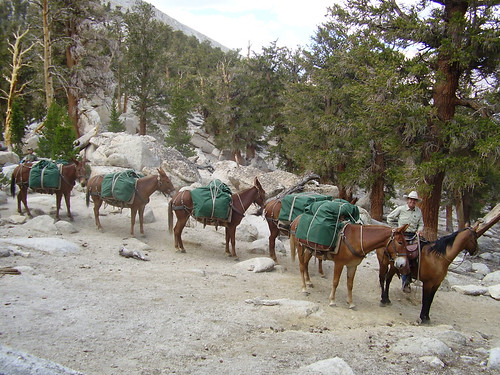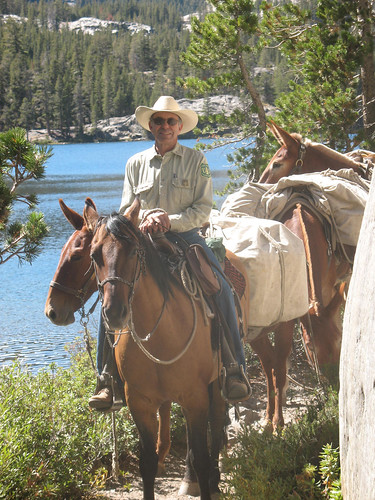
Lee Roeser was born to be a mule packer. At a very early age, he learned the craft from his parents who ran a mule pack station in Mammoth Lakes, California. At age 6, he was already helping with the family business. By age 13, he began working as a packer; and at 16, he was hauling explosives, gear and tools for the public, the Forest Service and other government agencies, and mining and movie production companies.
“You must be passionate for the well-being of the animals,” said Roeser, a packer for the U.S. Forest Service on Inyo National Forest, home of one of the Pack Stock Centers of Excellence. “I do it for that and my love of the mountains and opportunity to continue to learn.”
The U. S. Forest Service has a long tradition of using pack stock to bring supplies to remote locations to support fire and trail crews. Currently, there are 11 packers and four packer trainees who service the Pacific Southwest Region. Pack-supported rangers and resource crews are also a common sight in wilderness areas, which do not allow mechanized transport of supplies and equipment. A 12-year Forest Service employee, Roeser embodies the most important qualities of a pack stocker: care for the animals, customer service and knowledge-making adjustments on the job.

“He grew up in an environment where there was a very high standard of packing for 50 years,” said Michael Morse, wilderness supervisor for the Mammoth District of the Inyo National Forest, co-director of the Pack Stock Center of Excellence, and a fellow packer. “His highest priority is always the safety of the animal and the packer. We consider Lee to be the best of the best and it shows in his work.”
Two years ago, Roeser faced an exceptional challenge: to haul heavy boxes, shovels and other equipment up a trail on the 12,500-foot Mt. Whitney in the Inyo National Forest for a trail reconstruction project. There were safety hazards along the trail and the project was going to take several months requiring more than 300 mule loads. Despite all the challenges, Roeser and his team didn’t have a single injury or accident. Roeser employed the strategy of using a ranger in front and back to look for the public to keep everyone safe. “It was flawless,” praised Morse.
“What makes me tick is always looking to make packing better for the animals and myself,” said Roeser. “I want the equipment to be more in harmony with the mules. You can’t be a packer for the salary. You have to have a love for working with mules in the mountains.”

